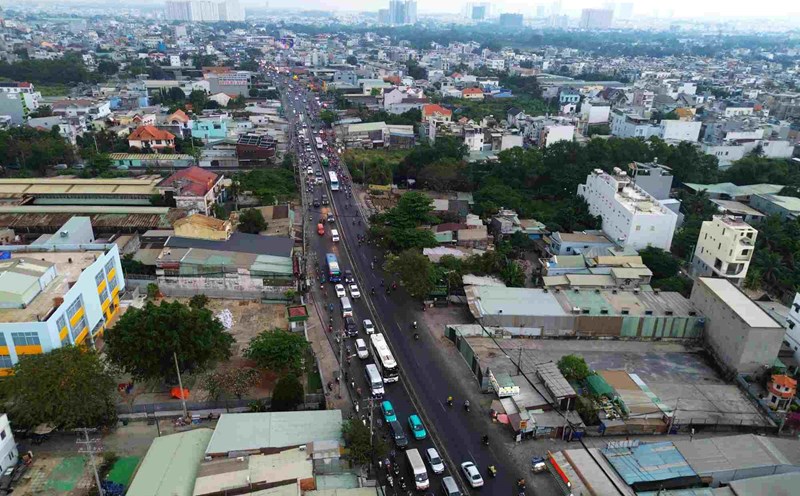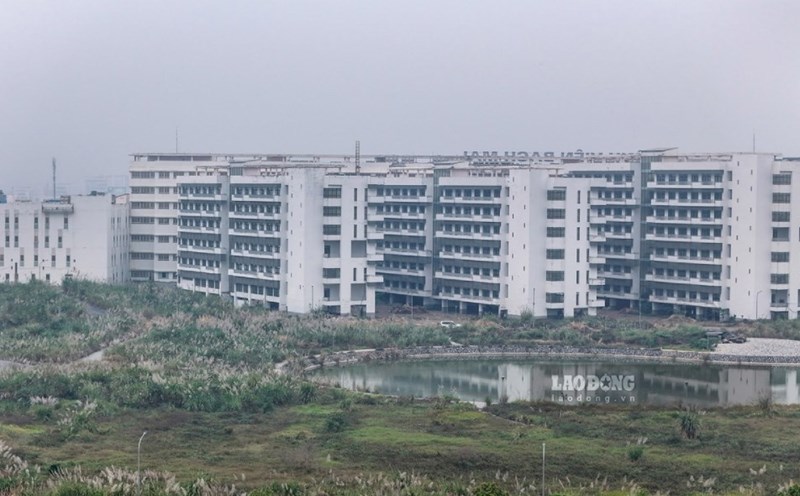Credit expected to grow strongly thanks to recovery of public investment and consumption
Vietnam enters 2025 with the expectation that the economy will continue to recover. In 2024, credit growth is good but not yet explosive because consumption and private investment have not really improved. Retail sales in 2024 increased by only 9.3% over the same period, showing that purchasing power is still weak. However, this also opens up great room for credit growth in 2025, when people's income improves and consumer confidence increases.
Another important factor is public investment. According to MBS Research, the disbursement rate of public investment capital in 2024 reached 86.4% of the plan, up 5.7% over the same period.
In 2025, the Government sets a GDP growth target of 8%, while boosting public investment to stimulate the economy. The expected disbursement rate can reach 90%, contributing to boosting the demand for loans of enterprises in the construction, infrastructure and related sectors. Accelerating disbursement not only creates momentum for the business sector but also indirectly supports consumer growth through the spillover effect to workers' income.
Banks reduce interest rates to stimulate credit
In the context of credit needing to be pushed, many banks have quickly taken action with interest rate reduction moves. After a meeting with the SBV, on March 10, 18 SBV announced a reduction in deposit interest rates from 0.1-0.9%/year.
This step not only helps the bank increase competitiveness, but is also an important signal to support the economy. Low interest rates mean reduced borrowing costs, helping businesses reduce financial burdens, creating favorable conditions to expand production and business. However, not all low interest rates mean that credit will increase sharply.

Talking to Lao Dong, Ms. Vu Mai Chi, Deputy Head of the Banking and Finance Department, Banking Academy, assessed that low interest rates are only a supporting factor, more importantly the ability of the economy to absorb capital. She analyzed that although interest rates have decreased, many businesses are still not ready to borrow capital because their business prospects are not really clear.
"Some businesses are still concerned about purchasing power, production costs and instability from the international market. If they do not see clear profit opportunities, they will not expand operations, which means they will not borrow capital even if interest rates are reduced" - Ms. Vu Mai Chi commented.
In addition, Ms. Chi also pointed out concerns about exchange rates and import inflation. According to Ms. Chi, the interest rate cut could narrow the interest rate gap between VND and USD, putting pressure on the exchange rate. If the exchange rate fluctuates strongly, the cost of importing raw materials can increase, increasing inflation, affecting business costs and consumer purchasing power.
Another issue to note is that banks are still cautious when extending credit. "Although lending interest rates have decreased, banks still need to carefully assess risks before disbursing, especially for sectors with high risks such as real estate and securities. This makes it impossible to break out credit growth speed immediately but will gradually increase according to the recovery level of the economy" - Ms. Chi said.
Banks have advantages in the credit race
According to MBS Research, banks with higher credit growth advantages in 2025 will be units with the following factors:
First, the high credit limit has expired in 2024. Banks with a strong disbursement rate last year will have more opportunities to receive higher credit limits this year.
Second, the quality of assets is good. Banks with low bad debt ratio and high reserves will have more room to expand credit without having to worry about risks.
Third, the advantage of net interest margin (NIM). Banks with higher NIM will be able to reduce lending interest rates more strongly, thereby attracting better customers.
Although the credit outlook in 2025 is assessed as positive, there are still many challenges. Reduced interest rates may create favorable conditions, but if businesses are not ready to borrow capital, or the SBV tightly controls credit growth to avoid bad debt risks, credit growth will hardly reach the expected level.
According to Ms. Vu Mai Chi, banks need to have flexible strategies to both ensure credit expansion and control risks. The credit promotion cannot be done hastily, but needs to rely on the actual capital absorption level of the economy. If businesses have real needs, credit will grow sustainably. Conversely, if only chasing growth targets, the risk of bad debt may return.
In general, credit growth in 2025 is assessed to have many opportunities for breakthrough, but not without challenges. The economic recovery, the ability of enterprises to absorb capital and the operational policies of the SBV will be factors that determine whether credit is truly sustainable or not?











